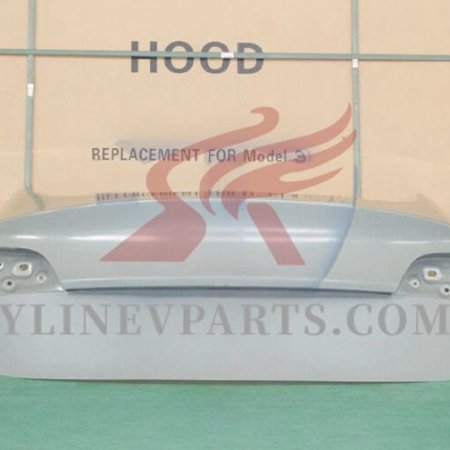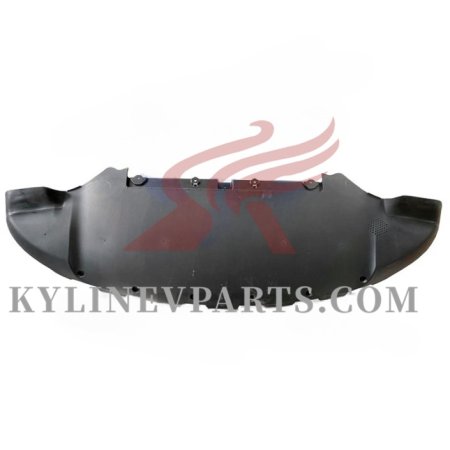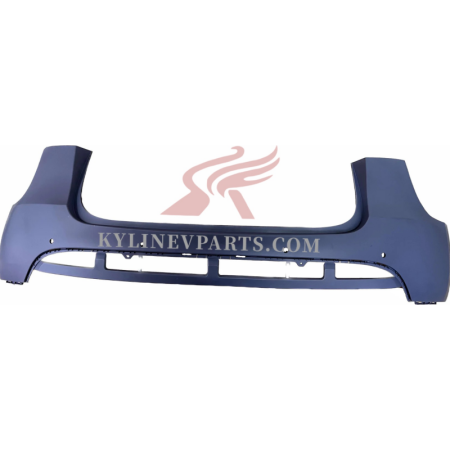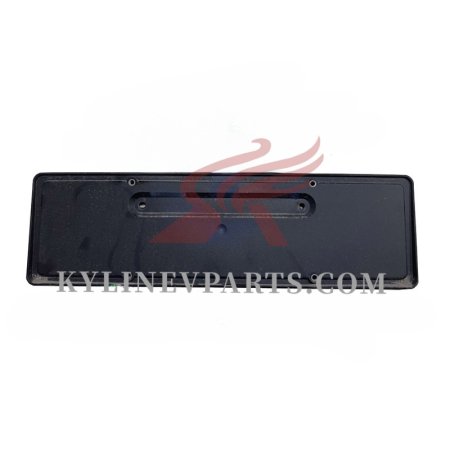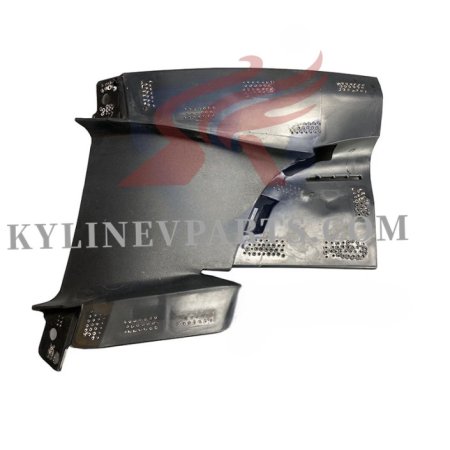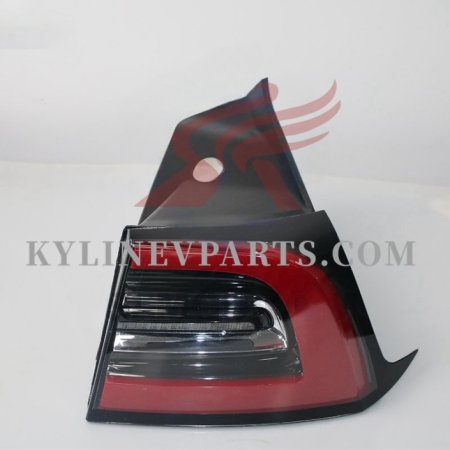Introduction
What Are OEM Tesla TPMS Sensors and Why Are They Important?
Tire Pressure Monitoring Systems (TPMS) serve as the vigilant guardians of your vehicle’s tires, constantly assessing and relaying critical information about air pressure. In modern vehicles, particularly in Teslas, these sensors are not just a luxury—they’re a necessity. Imagine cruising down the highway without a clue that one of your tires is dangerously underinflated. That’s where TPMS steps in, warning you before a small issue becomes a catastrophic failure.
Maintaining optimal tire pressure isn’t just about safety—though that’s certainly a top priority. It’s also about squeezing every mile out of your fuel, ensuring your tires wear evenly, and ultimately saving you money in the long run. Without properly functioning TPMS sensors, you’re driving blind to one of the most essential aspects of vehicle maintenance. Underinflated tires can lead to a host of problems: poor handling, extended braking distances, and, in the worst cases, sudden blowouts that could put you and others at serious risk.
In short, TPMS sensors are more than just electronic gadgets—they’re key players in keeping you safe, efficient, and rolling smoothly on the road.
Understanding OEM Tesla TPMS Sensors
What Does OEM Mean?
OEM, or Original Equipment Manufacturer, refers to parts produced by the same company that originally manufactured the components in your vehicle. When it comes to TPMS sensors for Tesla vehicles, OEM means these sensors are crafted to align perfectly with the design and engineering of your car. They’re not just parts—they’re the exact components Tesla intended for your vehicle, ensuring a seamless fit and flawless performance.
Choosing OEM TPMS sensors means you’re opting for parts that meet Tesla’s stringent specifications. This ensures not only top-notch reliability but also that your vehicle’s systems function precisely as they should. Unlike aftermarket options, OEM sensors are built with your Tesla in mind, offering unmatched compatibility and peace of mind. Furthermore, sticking with OEM parts helps maintain your vehicle’s warranty, avoiding potential issues that could arise from using non-OEM components.
Why Choose OEM Tesla TPMS Sensors for Tesla?
Opting for OEM TPMS sensors over aftermarket alternatives offers several compelling benefits:
Quality Assurance: OEM sensors are crafted to meet Tesla’s exacting standards. This guarantees that they’ll withstand the rigors of everyday driving, providing durable and accurate readings over the long term.
Perfect Compatibility: Designed specifically for Tesla’s onboard computer systems, OEM sensors integrate flawlessly. This eliminates the risk of malfunctions or inaccurate tire pressure readings, which can be common with aftermarket parts.
Warranty Protection: Using OEM sensors helps safeguard your vehicle’s warranty. Many manufacturers may void warranties if aftermarket parts are used, especially if those parts cause issues with the vehicle’s systems.
While aftermarket sensors might be tempting due to their lower price, they often fall short in critical areas. They may lack the precision and durability of OEM sensors, potentially leading to incorrect tire pressure readings or even failure to sync with your vehicle’s system. In the long run, these shortcomings could cost more in terms of both performance and peace of mind.
Compatibility of OEM Tesla TPMS Sensors with Different Models
How to Identify the Right TPMS Sensor for Your Tesla Model
Selecting the correct TPMS sensor for your Tesla involves understanding your vehicle’s specific model and production year. Tesla’s vehicles have evolved over time, leading to variations in sensor types. Here’s a straightforward guide to help you identify the right TPMS sensor for your Tesla:
Model S (2012–2020):
Early Models: Earlier versions of the Model S used different TPMS sensors compared to later years. It’s essential to identify whether your Model S falls within the earlier production years, as these sensors may not be compatible with the newer software updates.
Visual Aid: Model S TPMS Sensor Compatibility Chart provides a detailed look at which sensors are compatible with specific production years.
Model 3 and Model Y (2017–Present):
Recent Models: These models are equipped with advanced Bluetooth-enabled TPMS sensors. They offer enhanced communication with your vehicle’s systems for real-time data and improved accuracy.
Guide: Check the Tesla Model 3 & Model Y TPMS Sensor Guide for specific details on compatible sensors and installation tips.
Model X (2015–Present):
Compatibility: The TPMS sensors for the Model X are similar to those used in the Model S but may have specific compatibility requirements depending on the production year.
Reference: Use the Model X TPMS Sensor Compatibility Table to find the correct sensor for your vehicle.
Visual Aids and Tables
To make identification easier, use visual aids and compatibility tables:
- Tesla TPMS Sensor Compatibility Chart: Includes a detailed breakdown of sensors for each model and production year. Available at Tesla’s Official Compatibility Chart.
- Installation Diagrams: These diagrams help in understanding sensor placement and installation requirements for different Tesla models.
Differences Between OEM Tesla TPMS Sensors for Model S, Model 3, Model X, and Model Y
TPMS sensors vary significantly between Tesla models due to differences in design, functionality, and installation requirements. Here’s a comprehensive comparison:
Model S:
- Design: Earlier generations of Model S sensors are distinct from newer models. They may lack the advanced features found in later sensors.
- Functionality: Older sensors might not support the latest software updates, potentially leading to compatibility issues.
- Installation: Specific installation requirements may differ based on the production year. Refer to Tesla’s Model S TPMS Sensor Installation Guide.
Model 3 and Model Y:
- Design: These models utilize Bluetooth-enabled sensors, which offer superior communication with the vehicle’s systems.
- Functionality: Bluetooth technology enhances data accuracy and provides real-time updates on tire pressure.
- Installation: Installation is streamlined but requires specific sensors. For detailed instructions, see Model 3 & Model Y TPMS Sensor Installation
Model X:
- Design: The TPMS sensors are similar to those of the Model S but may have differences depending on the manufacturing year.
- Functionality: Ensure the sensors are compatible with your Model X’s year to avoid performance issues.
- Installation: Follow the Model X TPMS Sensor Installation Manual for accurate fitting.
Understanding these differences is crucial for ensuring that you purchase and install the correct TPMS sensor for your Tesla model. Accurate sensor selection and installation will help maintain optimal performance and safety for your vehicle.
For more detailed information, visit Tesla’s Official TPMS Support Page and consult with a certified Tesla service center for expert advice.
Installation of OEM Tesla TPMS Sensors
Step-by-Step Guide to Installing TPMS Sensors
Installing OEM TPMS sensors can be a seamless process if you follow these steps and have the appropriate tools. Here’s a detailed guide to assist you:
Preparation: Start by gathering all essential tools. You’ll need a tire pressure gauge, a jack, and a socket set. Make sure your workspace is clean, well-lit, and free from distractions to ensure a smooth installation process.
Remove the Wheel: Use the jack to lift the vehicle, making sure it’s securely supported by jack stands. Carefully remove the wheel where the new TPMS sensor will be installed. Ensure the vehicle is stable before proceeding.
Install the Sensor: Detach the tire from the rim. Once you have access, follow the manufacturer’s instructions to install the new TPMS sensor. After the sensor is securely in place, remount the tire onto the rim, ensuring it is properly seated.
Reinstall the Wheel: Reattach the wheel to the vehicle and tighten the lug nuts to the manufacturer’s specifications. Lower the vehicle from the jack stands and double-check that the wheel is properly aligned and securely fastened.
Calibrate the Sensor: Once installed, the sensor must be calibrated with your vehicle’s system. This step often involves driving a short distance or using a specific calibration tool to ensure the sensor communicates effectively with your car.
When to Seek Professional Installation
Opting for professional installation can be a wise decision in certain circumstances. Consider professional services if:
- You Lack Mechanical Confidence: If you’re unsure about your mechanical skills, it’s advisable to have a professional handle the installation to prevent any potential errors.
- Complex Calibration Requirements: Some TPMS sensors might require intricate calibration, which a professional best manages to ensure accurate performance.
- Lack of Tools: If you don’t possess the necessary tools for the job, a professional can provide the right equipment and expertise.
The investment in professional installation is often worthwhile for the peace of mind that comes from knowing the job is done correctly, ensuring your TPMS sensors function optimally and your vehicle remains safe and reliable.
Maintaining and Troubleshooting OEM Tesla TPMS Sensors
Common Issues with Tesla TPMS Sensors and How to Fix Them
Even with OEM sensors, problems can arise. Here’s a breakdown of common issues and how to address them:
Sensor Malfunction: This could be due to a dead battery or physical damage. To fix it, replace the sensor battery or check for any visible damage. If the sensor is damaged beyond repair, replacing it might be necessary.
Inaccurate Readings: Incorrect installation or interference from other electronic devices can lead to inaccurate readings. Ensure that the sensors are installed correctly and that there’s no interference from nearby electronics. Double-check the installation against the vehicle’s manual.
Signal Loss: Sometimes, the sensor may lose communication with the vehicle’s system, causing errors. To resolve this, verify that the sensor is properly mounted and has a clear signal path to the vehicle. Recalibrate the system if necessary.
To troubleshoot these issues:
- Check the Battery: If the sensor isn’t transmitting data, it might be due to a dead battery. Replacing the battery is often a quick fix.
- Recalibrate the Sensor: Refer to your vehicle’s manual for instructions on how to recalibrate the system. This can often resolve communication issues.
- Inspect for Damage: Examine the sensor and valve stem for any physical damage. Damaged components may need to be replaced to ensure proper function.
If these steps don’t resolve the problem, consulting a Tesla service center or professional mechanic may be necessary.
How Often Should You Replace TPMS Sensors?
TPMS sensors typically last between 5 and 7 years, but this can vary based on driving conditions and maintenance practices. Signs that it’s time to replace your TPMS sensors include:
- Persistent TPMS Warning Light: If the warning light remains on despite proper tire inflation, the sensors might be failing.
- Inaccurate Tire Pressure Readings: Consistently incorrect readings can indicate sensor issues.
- Visible Damage: Cracks or other visible damage to the sensor itself may necessitate replacement.
Regular maintenance, such as keeping tires properly inflated and avoiding harsh driving conditions, can help extend the lifespan of your TPMS sensors.
How to Calibrate and Reset Tesla TPMS Sensors
After installing new sensors or rotating tires, calibration might be required. Here’s how to do it:
Drive the Vehicle: Many Tesla models will automatically recalibrate the sensors after a short drive. This process allows the sensors to sync with the vehicle’s system.
Use a Calibration Tool: Some models may need a specific calibration tool. Refer to your vehicle’s manual for details on whether such a tool is necessary and how to use it.
Follow On-Screen Prompts: Tesla’s infotainment system might provide step-by-step instructions for recalibrating the TPMS sensors. Follow these prompts to ensure accurate sensor data.
Proper calibration ensures that your TPMS system delivers accurate readings, helping you maintain optimal tire pressure and driving safety.
People Also Ask” (PAA) questions about TPMS sensors
What is the difference between OEM and aftermarket TPMS sensors?
OEM TPMS Sensors:
- Definition: OEM stands for Original Equipment Manufacturer. These sensors are made by the same company that manufactured the original sensors installed in your vehicle.
- Compatibility: They are specifically designed to fit and function seamlessly with your vehicle’s system.
- Quality: Typically adhere to the vehicle manufacturer’s high standards for reliability, accuracy, and durability.
- Warranty: Using OEM parts helps maintain your vehicle’s warranty, ensuring that all components work as intended without issues.
Aftermarket TPMS Sensors:
- Definition: Aftermarket sensors are produced by third-party manufacturers, not the vehicle’s original manufacturer.
- Compatibility: They may not always be perfectly compatible with your vehicle’s systems, which can lead to potential functionality issues.
- Quality: While often more affordable, they might not meet the same standards as OEM sensors and could vary in performance and reliability.
- Cost: Generally cheaper but may come with risks of reduced performance or increased maintenance issues.
How do I know if my Tesla TPMS sensor is bad?
To determine if your TPMS sensor is malfunctioning, look for these indicators:
- Warning Lights: A persistent TPMS warning light on your dashboard suggests an issue with the sensor or the tire pressure itself.
- Inaccurate Readings: If you notice that the tire pressure readings are consistently wrong or inconsistent, it may indicate a sensor problem.
- Frequent Alerts: Constant alerts about low tire pressure, despite correct inflation, could mean a faulty sensor.
- Physical Damage: Inspect the sensors and valve stems for any visible damage or leaks.
If you suspect a problem, it’s advisable to have the sensors inspected and tested by a professional to confirm the issue.
Can I install TPMS sensors myself?
Yes, it’s possible to install TPMS sensors yourself, but it requires careful attention:
Preparation: Ensure you have the necessary tools, including a jack, tire pressure gauge, and a socket set.
Removing the Wheel: Lift the vehicle with the jack, remove the wheel, and dismount the tire.
Installing the Sensor: Replace the old sensor with the new one, ensuring it’s correctly installed before remounting the tire.
Reinstalling the Wheel: Secure the wheel back onto the vehicle and lower it.
Calibrating: Follow the instructions in your vehicle’s manual or use a calibration tool to sync the new sensor with your vehicle.
What happens if I don’t replace a faulty TPMS sensor?
Neglecting to replace a faulty TPMS sensor can lead to:
- Safety Risks: Faulty sensors may fail to alert you about under-inflated tires, increasing the risk of tire blowouts, accidents, and poor vehicle handling.
- Inaccurate Readings: You may receive incorrect tire pressure information, leading to improper inflation levels that can affect tire wear and vehicle safety.
- Reduced Performance: Under-inflated tires can decrease fuel efficiency, handling, and overall driving comfort.
- Potential Legal and Warranty Issues: Driving with malfunctioning sensors could void vehicle warranties and may be against regulations in some regions.
Regular maintenance and timely replacement of faulty TPMS sensors are crucial for ensuring vehicle safety and performance.
Where can you buy OEM Tesla TPMS Sensors?
Kylin EV Parts Ltd is located in Guangzhou, the hub of China’s automotive parts industry. Established in 2013, we focus on the supply chain of new energy automotive parts, providing brand solutions for entire vehicle series from a screw to exterior components, connecting the upstream and downstream supply chains, and forming strategic alliances with production factories through customization, alliance. Adhering to the principle of ensuring the quality of a component is equal to protecting the safety of a family.
In 2022, our international trade department was established, focusing on the integration of Tesla, VW, and BYD, as well as aftermarket modifications. As China’s premier B2B supplier, we offer a comprehensive service in integrating EV spare parts for numerous foreign sellers, both online and offline.
We extend a cordial invitation to collaborate with foreign dealers and explore OEM and ODM partnerships for our products. With our commitment to the most professional service, the highest quality products, and the most reasonable prices, we endeavor to provide unparalleled support.


